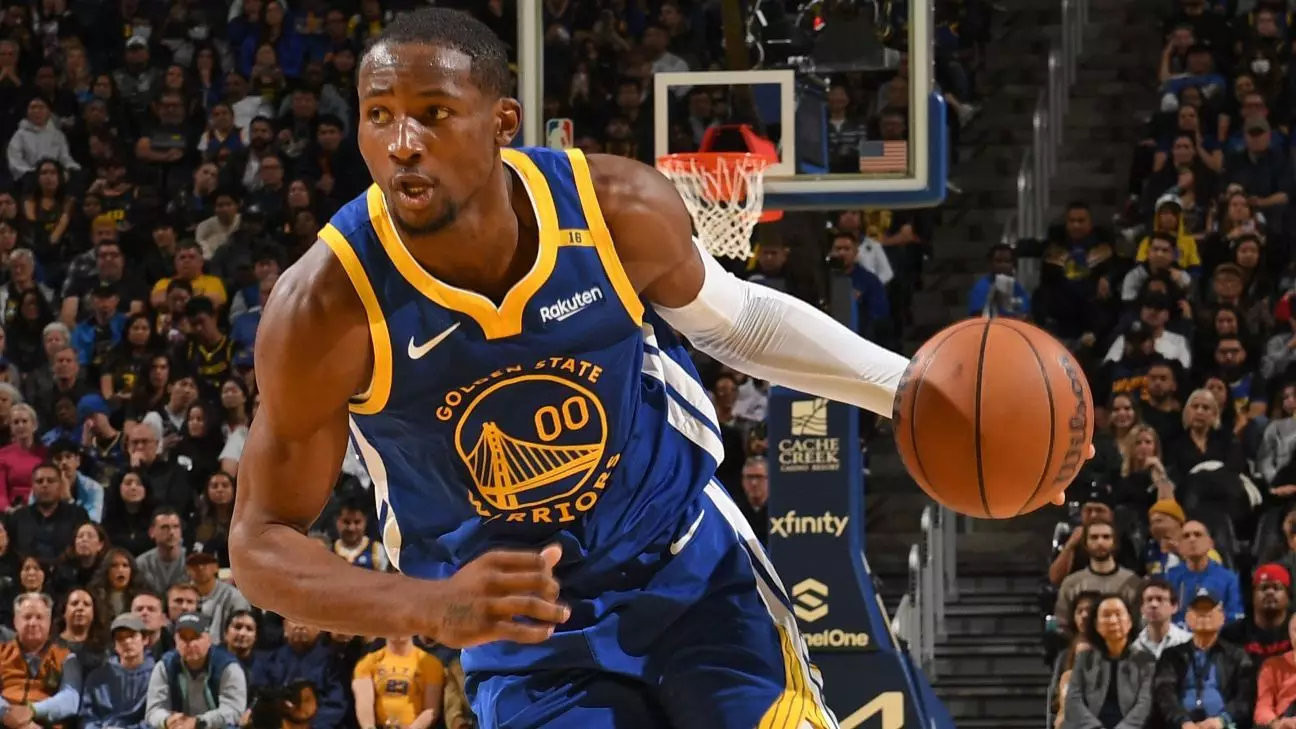In the realm of professional basketball, contract negotiations often follow a predictable pattern—players accept offers from their current teams or seek trades within set league parameters. However, Jonathan Kuminga’s current stance disrupts this familiar script, illustrating the evolving landscape where athletes increasingly exercise agency over their careers. Kuminga’s refusal to settle for the Golden State Warriors’ latest offer signals a broader shift: players are not merely passive recipients of franchise decisions but active participants negotiating for their value, role, and future stability.
His cautious approach—deliberately holding back from signing or completing a trade—demonstrates a deep awareness of his worth and ambitions. Kuminga is not content with being a secondary piece or a stopgap; he’s asserting that his development deserves recognition through guaranteed opportunities and a prominent role. This defiance of traditional waiting games highlights a newfound confidence among athletes, emphasizing that career longevity and satisfaction are paramount over short-term financial gains. Kuminga’s stance questions whether NBA teams are adapting quickly enough to the modern player’s desire for control and meaningful participation.
Side Steps and Significance of Sign-and-Trade Dynamics
The ongoing limbo surrounding Kuminga also exposes the complexities of sign-and-trade transactions, a mechanism that often serves as a compromise for both parties—teams seek to offload or acquire assets while players aim to maximize their earnings and roles. Kuminga’s representatives have actively explored opportunities with franchises like Phoenix and Sacramento, but tangible progress remains elusive. These negotiations reveal a league hesitant to embrace the risk that comes with promising young players and the potential salary cap ramifications.
The Warriors’ firm stance—they demand a first-round pick and reject low-ball offers—further underscores how high the stakes are for Kuminga’s future. This reluctance to bend hints at a broader philosophical debate: should teams prioritize immediate team composition or safeguard future flexibility? Kuminga’s camp, leveraging league-wide limitations like cap space scarcity and cautious franchise valuations, hopes to capitalize on the market’s stagnation. His willingness to accept the Warriors’ qualifying offer—potentially sacrificing immediate earning power—reflects strategic patience, aiming for long-term control, stability, and perhaps a more lucrative deal down the line.
The Psychology of Aspiration: Seeking Respect and a Leading Role
Beyond contractual figures, Kuminga’s insistence on a more significant role reveals underlying psychological themes—namely, a quest for respect, validation, and self-identity within the sport. Despite impressive playoff performances, such as explosive scoring streaks in critical games, his limited role during the first-round series indicates a gap between his potential and his usage. Kuminga perceives himself not just as a supporting player but as a vital contributor who can carry responsibility, especially as he approaches a pivotal stage in his career.
His desire for a guaranteed starting position stems from a broader aspiration: to be recognized as a core piece rather than a developmental project. This drive aligns with a narrative increasingly prevalent among young NBA stars, who refuse to remain in the shadow of veteran players or be relegated to rotational duty. Kuminga’s stance emphasizes that aspiring athletes today demand clarity, consistency, and respect—elements that translate into their negotiations and outlook on their careers.
Leadership and Future Prospects: The Influence of Mentorship and Personal Agency
The influence of coach Steve Kerr’s conversations with Kuminga highlights the importance of mentorship and communication in player development. Kerr’s efforts to communicate value and reassure Kuminga about his potential illustrate how leadership shapes young players’ mindset and career trajectory. Nevertheless, Kuminga’s firm negotiation position signals that even strong mentorship may not suffice if the player’s aspirations for a meaningful role are unmet.
This situation also sparks broader questions about the future flexibility of NBA rosters and the league’s capacity to adapt to player-driven negotiations. Kuminga’s case underscores how internal team strategies must evolve to retain promising talent—offering not just financial incentives but also clear pathways to leadership and prominent responsibilities. If teams fail to recognize these shifting dynamics, they risk losing valuable assets—young stars eager for genuine engagement and control over their careers.
In essence, Kuminga’s current stand is more than a contract dispute; it embodies a larger movement towards athlete empowerment. His choices exemplify a new generation of players who view themselves as active architects of their destinies—demanding respect, challenging traditional management, and advocating for roles aligned with their aspirations. This evolution promises to reshape the NBA not just in contract negotiations but in the fundamental culture of athlete-team relationships, emphasizing that power now resides increasingly with the players who are willing to stand firm for their vision of success.


Leave a Reply